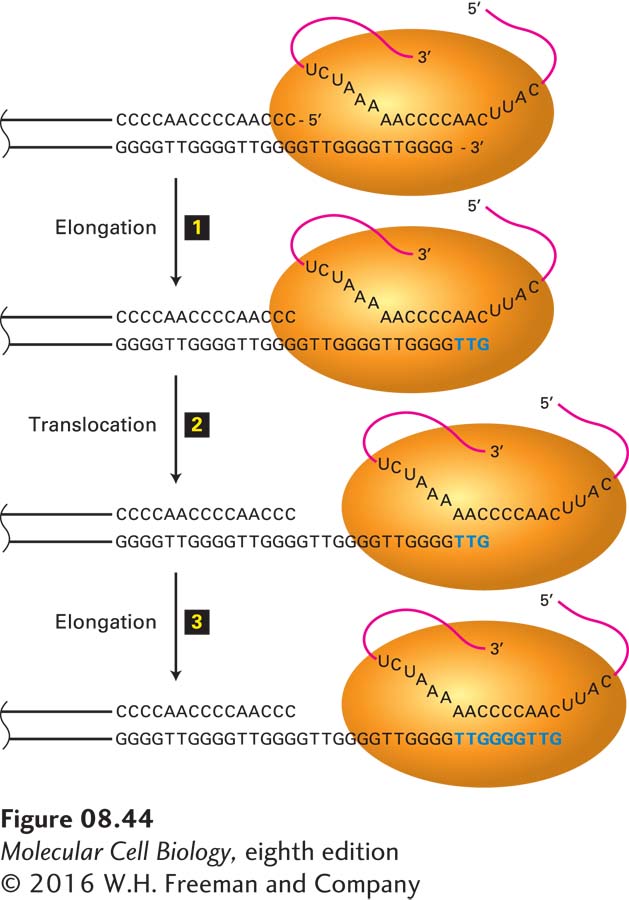
FIGURE 8- 44 Mechanism of action of telomerase. The single- stranded 3′ terminus of a telomere is extended by telomerase, counteracting the inability of the DNA replication mechanism to synthesize the extreme terminus of linear DNA. Telomerase elongates this single- stranded end by a reiterative reverse- transcription mechanism. The action of the telomerase from the protozoan Tetrahymena, which adds a T2G4 repeat unit, is depicted here; other telomerases add slightly different sequences. The telomerase contains an RNA template (red) that base- pairs to the 3′ end of the lagging- strand template. The telomerase catalytic site then adds deoxyribonucleotides TTG (blue), using the RNA molecule as a template (step 1). The strands of the resulting DNA- RNA duplex are then thought to slip (translocate) relative to each other so that the TTG sequence at the 3′ end of the replicating DNA base- pairs to the complementary RNA sequence in the telomerase RNA (step 2). The 3′ end of the replicating DNA is then again extended by telomerase (step 3). Telomerases can add multiple repeats by repetition of steps 2 and 3. DNA polymerase α-primase can prime synthesis of new Okazaki fragments on this extended template strand. The net result prevents shortening of the lagging strand at each cycle of DNA replication. See C. W. Greider and E. H. Blackburn, 1989, Nature 337:331.
[Leave] [Close]